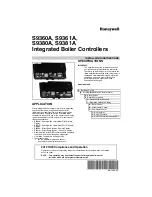
ver.2
22
The boiler is assembled in heating systems equipped with opened or closed expansion tanks if the
requirements of the chapter ”Safety elements” are met.
Attention: Installing the boiler in heating systems equipped with closed expansion tanks is
allowed only provided that the heat from the temperature lag is taken over, if the overheating in
case of fault of current is avoided and if the failure of the circulation pump or lack of heat
necessary are avoided. Otherwisewise, the assembling of the boiler shall be with an OPEN
expansion tank!
In designing the central heating system, it is very important to carefully size the pipes and the
pressure loses on these heating elements.
Before assembling the boiler, the system must be washed and cleaned of fats, dirt and free
mechanical particles. Within the circuit, a separating device must be installed to collect the
mechanical impurities that might appear after assembling the installation.
The connections may be done by soldering or by compression adapting pipes in case of copper
pipes, couplings or collars in case of steel pipes. The pipes must be provided with a necessary slope
for easy airing and emptying towards the points thus designed in the installation.
The emptying points must be located in accessible points allowing water draining.
The airing points must be placed in the highest areas.
Manual airing of the pipes of the old installation is not enough, which is why it is recommended
to fix manual airings on each heating element (radiators, registers etc).
The cold water pipe feeding the coil for hot household water and cooling coil will be permanently
open (The ACM network is closed only using the valves of the consumption points) to allow the
taking over of the circuit expansion.
If the installation has pipe sections exposed to negative temperatures, the water pipes will be heat-
insulated.
1.6. Safety elements
Open expansion tank with safety pipes turn-return or close expansion tank
Bleeder adjusted at the pressure of 2.5 bars (according to the technical data table);
Cooling coil connected to cold water network and to the drain installation trough a heat
bleeder “heat valve ” STS 20 or TS 130;
Attention:
It is forbidden to assemble closing elements, such as valaves, interposed
between the boiler and the connector to the expansion tank!
It is forbidden to assemble closing elements of tap type interposed between the boiler
and the bleeder!
The bleeder and the heat valve must be EC certified.
We recommend the assembling of bleeders even when you decide to assemble the boiler
with an open expansion tank.
1.7 Connection of the safety elements
Means of protecting the boiler against overheat (overheat that may lead to the damage of the
boiler):
- If there is a permanent source of water, the connection of the cooling coil is executed with
the heat valve STS 20 - ¾” (Fig.14.)
- Assembling the boiler operating through trough heat siphonage (gravitational circulation)
-
When using certain hydrophore type equipments, the boiler may be protected by means of
using a back-up source of electricity (battery or generator) for the circulation pump.
-
SAFETY ELEMENTS
BOILER’S CONNECTION
Содержание FI-100NSP
Страница 9: ...ver 2 9 Each boiler has its own identification plate IDENTIFICATION fig 1 ...
Страница 12: ...ver 2 12 Side view Front view fig 5 fig 4 TECHNICAL DATA fig 6 fig 7 1 ...
Страница 13: ...ver 2 13 fig 7 2 fig 7 3 TECHNICAL DATA ...
Страница 34: ...ver 2 34 2 3 Burner s circuit diagram PELLETS BURNER fig 25 ...
















































